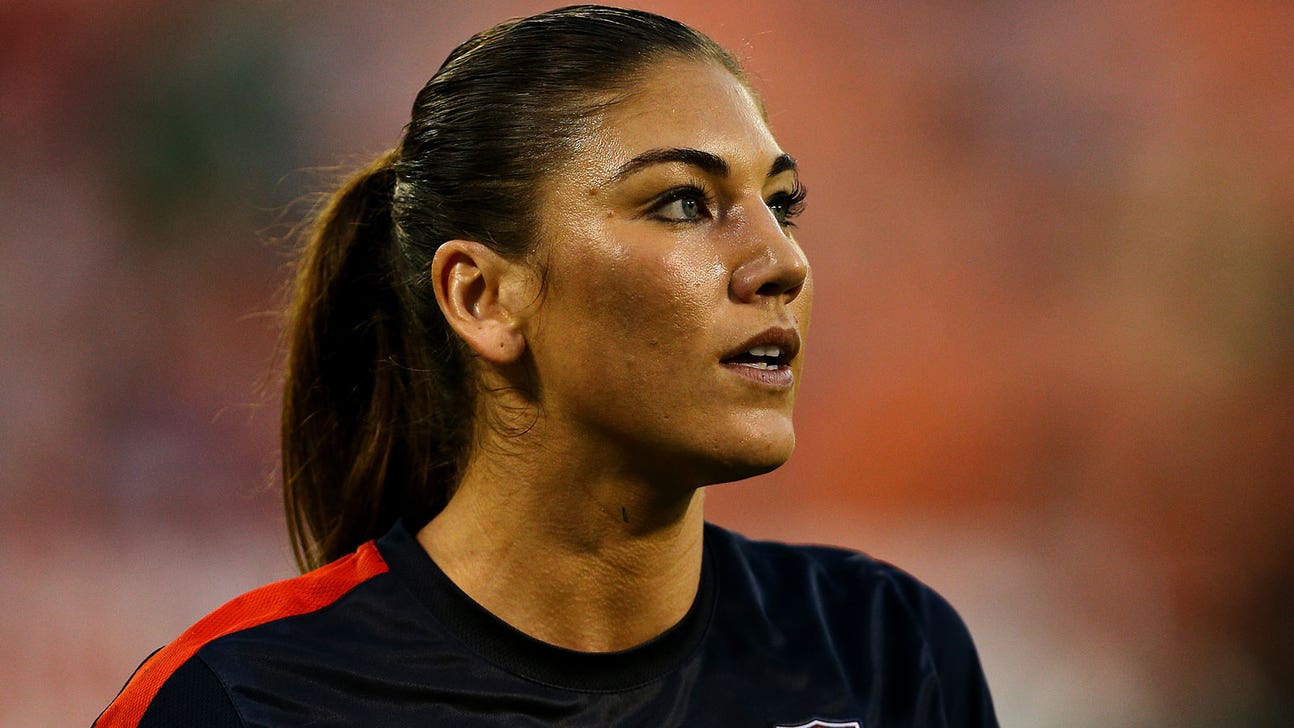
Hope Solo denied record as USWNT defeats Switzerland in friendly

CARY, N.C. --
When an international game against a stodgy opponent is won 4-1, levelling reasonable criticism at a team isn’t easy. But following their friendly victory over Switzerland by that score on Wednesday night, the United States women’s national team found plenty to nitpick in their own performance.
The end-game, after all, isn’t the fairly meaningless contests such as these, it’s World Cup qualifying in October, and then the Women’s World Cup itself in Canada next summer. That means affairs such as these aren’t resume builders so much as teachable moments, and the truth of the matter is the score flattered the Americans. They had set out to control the ball, set the pace of the game and deploy a more expansive attack. Those intentions weren’t delivered on and they admitted as much.
“We talked about our build-up, we’ll definitely work on that,” said head coach Jill Ellis following the game. “We’ve got to get more out of our outside backs going forward. We have to get a little bit more connection centrally [in midfield] between our three.”
Veteran central midfielder Carli Lloyd added that on the other side of the ball, the team was too slow in transitioning back to defense after turnovers. “Having that mindset of getting into our defensive shape quicker, [we have to be] a little bit more diligent with that,” she said. “As long as we’re compact we won’t give teams a lot of time and space to play.”
There is, in short, plenty of room for growth yet, even if the USA are undefeated in Ellis’s five games in charge since she took over from her dismissed predecessor Tom Sermanni in early April. Ellis has big ambitions to revamp the Americans’ playing style. For years, they got by on brawn and direct play, capitalizing on the superior ability of a long line of a world class strikers.
The women’s game has evolved though, as was in ample evidence at the last World Cup. It seems pretty plain now that if the USA are to end a 16-year drought next summer and finally win a third title, they will have to adjust to the times. A different skillset and outlook is needed than before, and the Americans need to learn to control possession in what promises to be a more technical and tactically sophisticated World Cup than ever before.
To that end, Ellis would like Lauren Holiday to dictate the flow of the game from deep in the midfield; for Lloyd to ferry between the two penalty areas; and for Megan Rapinoe to migrate centrally from the left wing to run at defenses and send final passes to the strikers. In other words, she wants three central ball-handlers to seize control of games.
This represents a significant tactical evolution for a team whose playing style went unchanged for years and years. It’s a work in progress. “I think we need to get better at keeping the ball higher up the field and break teams down like that,” said Rapinoe. “We need to dictate games more and take care of the ball better. We need to be a bit more tidy.”
Implementing this change, which the Americans believe to be all-important to their World Cup hopes, has been tricky. Change takes time, and there has been unusually little of that. Since the Algarve Cup in early March, the USA has been together for just 25 days. In recent years, before the National Women’s Soccer League was started as the third attempt at a professional domestic league, the team would have been together for at least two weeks out of every month. Ellis has been in charge for just one extended camp of less than two weeks surrounding the pair of friendlies against France in June.
There were just two days of practice before the Americans took on Switzerland, hardly enough time to get every player healthy and reacquainted. That took a toll. “In some moments in the France games we were really good in the way we combined and found a little tempo,” said forward Christen Press. “I think today we got away from that a little. I felt personally that we were a little too frantic at times and weren’t able to control the pace until really deep into the second half.”
It didn’t help that the players are in the home stretch of the NWSL season, with the playoffs coming up. “We’ve come from really vigorous NWSL schedules and to be able to be a possession-oriented team you’ve got to run more than the other team and always get open,” Press said. “I felt my legs heavy; I think a lot of the players did. I hope that if we’re super fresh we’re going to be able to find those angles and combine and make our jobs easier.”
The USA will have two more weeks together in September, wedged around a pair of games with Mexico, before they set off on their qualifying campaign in early October. If they are to make good on their towering ambitions over the next year, they had better use them wisely.